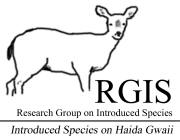

An overview of consequences
- Menu
- Home
- Haida Gwaii
- Introduced Species
- RGIS
- What did we learn?
- Research
- Publications
- RGIS symposium
- School curriculum
- Contacts
- English
- Français
|
|||
|
There are 657 species
of plants on Haida Gwaii, almost 23% are
introduced. |
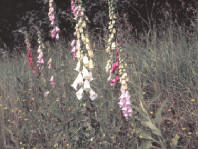 |
||
|
|
|||
|
Many plants were introduced for and remain decorative in our gardens or provide feed for livestock, but some are invading and overwhelming the native species. |
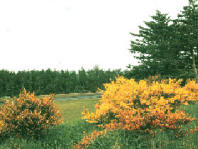 |
||
|
|
|||
|
Some
plants, like the yellowflag iris got themselves to Haida Gwaii. These
plants were first found on the beaches of Luxana Bay and Frederick
Island where they had floated from the south. |
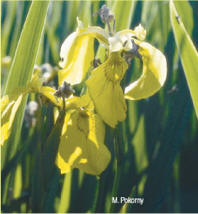 |
||
|
|
|||
|
Many of the introduced
plant species are restricted to roadsides or other disturbed areas but
some are very invasive or aggressive and can move into sensitive
ecosystems displacing native species. |
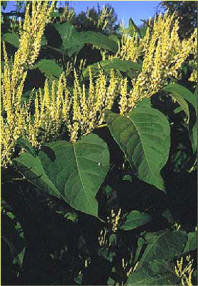 |
||
|
|
|||
|
Knotweed has a unique
method of spreading itself. It likes to grow on stream edges, where the
roots break off and float away to re-establish itself downstream.
|
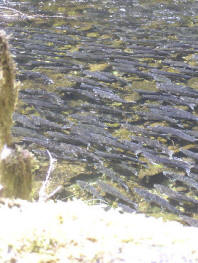 |
||
|
|
|||
|
Like the introduced Sitka black-tailed deer many plants have become a part of the Island lifestyle and management plans need to consider this social aspect. It is another need to monitor the impacts and perhaps conduct some control in order to maintain native ecosystems. |
|||
|
return to top of
page |
|||